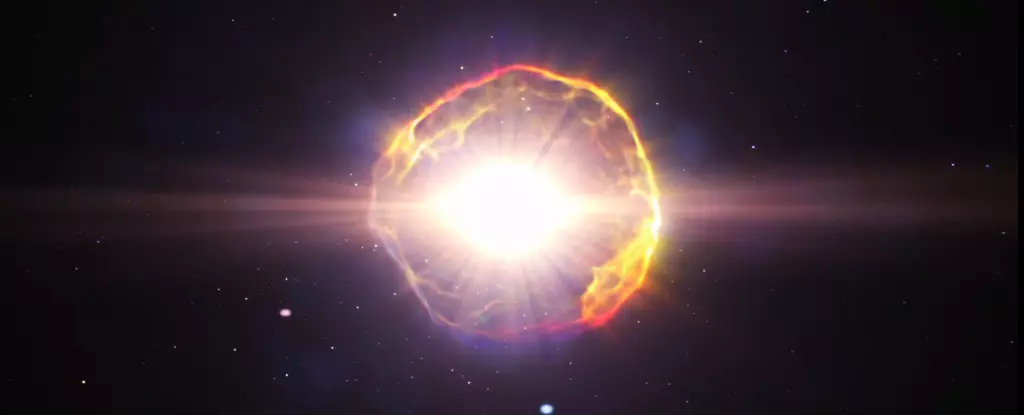In the vast expanse of the night sky, a rare and captivating event is set to unfold – the appearance of a “new star” or nova. This celestial phenomenon presents an opportunity to witness a cosmic spectacle that is both elusive and mesmerizing. T Coronae Borealis (T CrB), a star located in the constellation of the northern crown, is the protagonist of this cosmic drama. Although typically obscured by the darkness of space, T CrB makes a grand entrance every 80 years or so, shining brightly before fading back into obscurity.
Broadening our gaze beyond the immediate spectacle, we encounter the intricate dance of stellar remnants that gives rise to the phenomenon of recurrent novae. At the center of this celestial ballet lies T CrB, a white dwarf star that has transcended its primordial phase of nuclear fusion, now residing in a state of gravitational collapse. Its partner in this cosmic pas de deux is a red giant star, engulfed in the twilight of its own existence. The white dwarf siphons gas from its bloated companion, forming an accretion disc that ignites in a burst of thermonuclear energy, propelling T CrB to a luminosity 1,500 times greater than its usual radiance.
The recurrent nature of T CrB’s eruptions provides astronomers with a unique window into the cyclical nature of cosmic phenomena. With only ten recurrent novae currently identified, T CrB stands as a beacon of predictability in the unpredictability of the cosmos. Through meticulous observation and historical records dating back to the year 1217, astronomers can anticipate the star’s periodic outbursts with remarkable precision. The consistency of T CrB’s eruptions, such as those witnessed in 1866 and 1946, offers tantalizing clues to the underlying mechanisms driving these celestial performances.
As we turn our eyes skyward, amateur astronomers play a crucial role in monitoring and documenting the celestial antics of T CrB. The dedicated efforts of these stargazers, who meticulously track the star’s pre-eruption signs, provide invaluable contributions to our understanding of recurrent novae. Armed with an arsenal of telescopes and a passion for the night sky, amateur astronomers stand poised to capture the fleeting brilliance of T CrB’s eruption, heralding the dawn of a new cosmic cycle.
In the twilight hours of the night, as T CrB prepares to unveil its radiant display, we are reminded of the enduring beauty and mystery that permeates the cosmos. Through the lens of recurrent novae like T CrB, we catch a fleeting glimpse of the cosmic symphony that unfolds in the depths of space, captivating our imaginations and illuminating the boundless wonders of the universe.
As the stars align and the stage is set for T CrB’s grand performance, let us cast our gaze skyward and bear witness to the cosmic ballet that unfolds before us. In the ebb and flow of the universe, where stars are born and die in an eternal cycle of creation and destruction, we find ourselves humbled by the vastness and beauty of the cosmos.


Leave a Reply